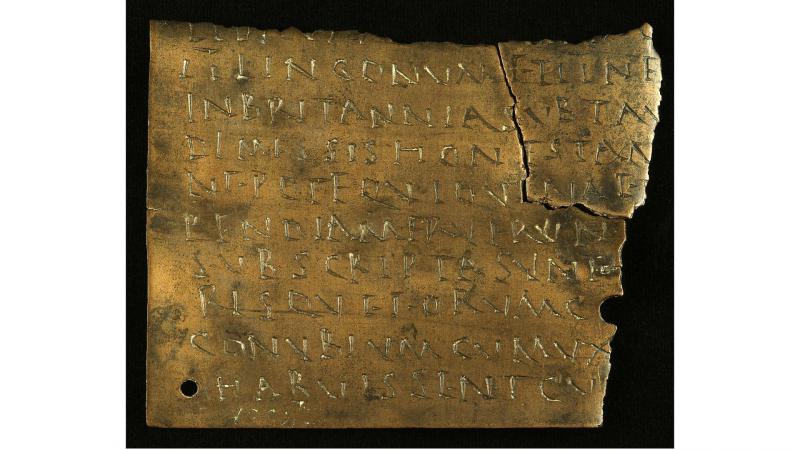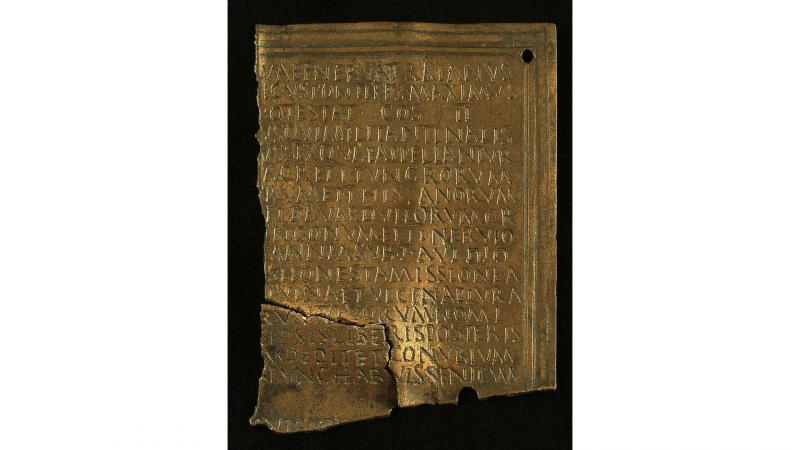These two joined fragments belong to a military diploma, which was engraved under the second consulate of Emperor Trajan in the year 98 CE. The diploma was originally in the form of a booklet, which consisted of two perforated bronze tablets connected by a wire that acted as a hinge. The official text, which is engraved in cursive script on the inside of the document, was sealed in front of seven witnesses so that it could not be falsified. A duplicate in cast writing, which could be read by everyone, was engraved on the outer faces of the diploma. As these "booklets" were all standardised, and more complete contemporary military diplomas were retained, it is possible to reproduce the entire original text with near-perfect accuracy.
The awarding of this diploma to auxiliary soldiers, who had served as part of voluntary service in the army for 25 years or more, gave them honourable leave (honesta missio), which meant retirement. The privileges granted by the emperor to the holder of the document, as well as to his descendants, were Roman citizenship (civitas Romana) and the right to legally-recognised marriage (conubium). The name of the veteran, that of his army corps and that of his commander, cannot be seen, nor could his ranking. However, the inscriptions preserved suggest that this soldier, who was mobilised in Roman Brittany under the Roman governor Titus Avidivs Quietvs, was from the city of Tongeren.
The diploma was given to the local authorities where the veteran wanted to settle, which was often his country of origin. The latter broke the seals and agreed to grant the privileges announced in this official document, with a copy in compliance with the original being posted to Rome on the wall of the deified Temple of Augustine, near the sanctuary of Minerva.
Flémalle's diploma provides valuable information about the origin of the three cavalry wings and six infantry cohorts to which mobilised soldiers who served in Great Britain belonged.

